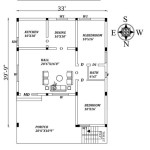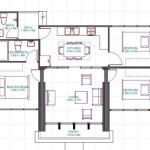Essential Aspects of Project Plan To Build A House
Embarking on the journey of building a house requires meticulous planning and a well-defined project plan. This comprehensive guide will shed light on the crucial aspects that you should consider to ensure a successful project.
1. Determine Your Needs and Goals:
Before embarking on any project, it's paramount to define your specific needs and goals. Consider the size, number of rooms, amenities, and architectural style that align with your lifestyle and aspirations.
2. Establish a Budget:
One of the most critical aspects of a project plan is setting a realistic budget. Estimate expenses meticulously, including land acquisition, materials, labor, and permits. Be mindful of potential contingencies and fluctuations in costs.
3. Choose a Building Site:
The location of your house significantly impacts its value, convenience, and accessibility. Evaluate factors such as topography, soil conditions, access to utilities, and proximity to amenities when selecting a building site.
4. Design and Obtain Permits:
Hire a qualified architect to design your house, ensuring it meets your needs and adheres to building codes. Obtain necessary permits from local authorities, including building permits, electrical permits, and plumbing permits.
5. Establish a Timeline:
Create a realistic timeline for the construction process. Schedule milestones, such as ground preparation, framing, and finishing, and allocate sufficient time for each phase.
6. Choose a Contractor:
Select a licensed and reputable contractor who possesses expertise in residential construction. Verify references, check their insurance coverage, and ensure they have a proven track record of delivering quality work.
7. Manage the Project:
Effective project management involves regular site visits, progress monitoring, and communication with the contractor. Address any issues promptly and make necessary adjustments to stay on schedule and within budget.
8. Conduct Regular Inspections:
Throughout the construction process, schedule regular inspections with the architect and/or a structural engineer to ensure compliance with plans and building codes. These inspections help identify potential problems early on.
9. Be Prepared for Challenges:
No construction project is immune to unforeseen challenges. Be prepared for potential delays caused by weather conditions, material shortages, or unforeseen site conditions. Adapt your plan and timeline accordingly.
10. Finalize the Project:
Upon completion of the construction, ensure that all inspections are passed, and necessary certificates of occupancy are obtained. Conduct a thorough walkthrough and note any outstanding items that require attention.
By meticulously considering these essential aspects, you can lay the foundation for a successful project. Embark on the journey of building your dream house with confidence and the assurance that you have a well-defined plan in place.
Template Project Plan For House Build

House Building Project Template Plans Renovation Projects Planning
Template Project Plan For House Build

House Renovation Project Plan Template Unique The 2024 17 Bud Governor S State Projects Business Example Management Templates

Home Renovation Project Plan 10 Examples Format

Build Your Own House How To Get Started On Self Project

House Plans How To Design Your Home Plan

Episode 0 The Project Build A House Engineering Plans

Tiny Project House Floor Plans Construction Sketchup On Wheels Blog

House Plans How To Design Your Home Plan








